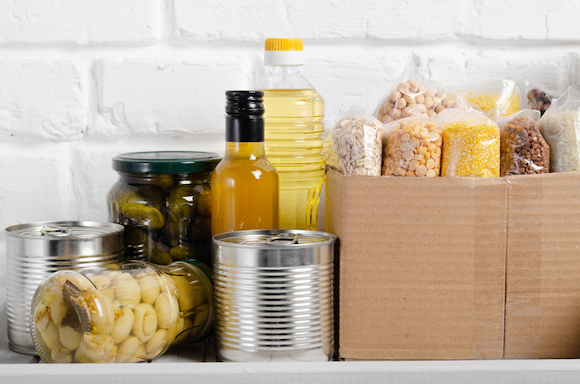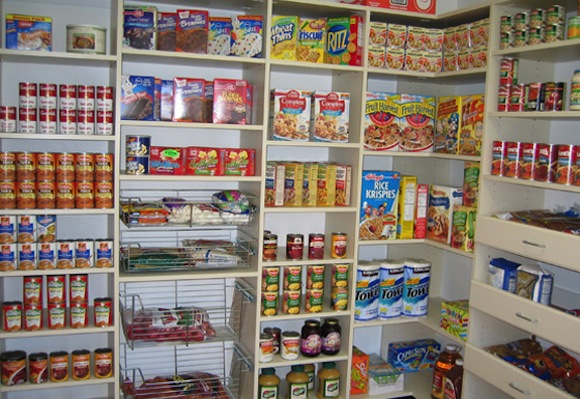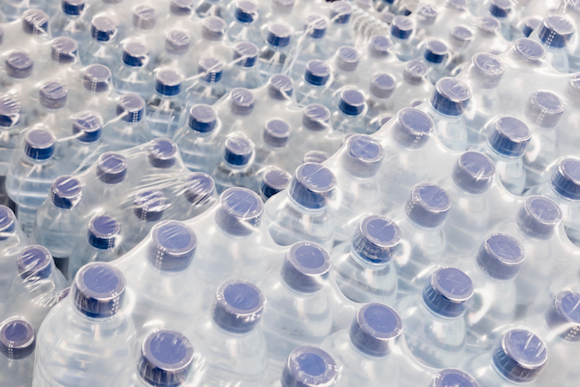When a tornado, hurricane or other disaster strikes, there may be little—or no—time to visit a grocery store.
And while storing food to prepare for natural disasters is key, keeping a supply for other unexpected events, such as a job loss, also can help prevent a crisis in your home.
“Food is like money in the bank,” said Paul Purcell, terrorism and natural disaster preparedness specialist and author of “Disaster Prep 101.” Having an ample supply on hand can help maintain your family’s well-being during the days and weeks after a disaster. Here are six tips on storing emergency food to keep yourself, and those you love, well-prepared.
1. Build Up Slowly
“Buy a little bit extra each week until you build up the reserves you desire,” Purcell advised.
In addition to spreading out the cost, this method will help you avoid having a large amount of food that expires at the same time. Depending on your location and situation, you might want a supply that lasts for a few weeks or months, or even longer.
As you stock food for your family, “only store what they’ll eat,” said Chaya Feodus of Pantry Paratus, a company specializing in kitchen self-sufficiency. For kids, keep ingredients on hand to make a few of their favorite meals. If you have pets, include items they’ll eat as well.
2. Rotate Items
Rather than letting your food supply sit idly, “incorporate it into your menu now, even if it’s once a week,” Feodus suggested.
To keep items organized, set your food storage pantry up so that older items are in front. If you have a stack of canned goods, place the cans that expire first on top. As you buy more supplies, place the new goods at the back of a shelf or on the bottom of a pile. This way, you’ll know which food needs to be used next.
Some items like dried fruits, nuts, and trail mixes should be rotated every 6 months to a year. Otherwise they may spoil. Beef jerky can keep for up to two years when sealed in its original airtight packaging.
3. Store Wisely
While you may want to keep some of your emergency food supply at your home, keeping a stockpile of food items at a secondary location, such as a self-storage unit, could provide an extra layer of protection. If the area surrounding your home gets damaged, but the spot where the storage unit is located is unharmed, you’ll still have an emergency food supply available. Furthermore, if you see a hurricane or other disaster coming, you could move some things from your house to a storage unit, Purcell said.
Keep in mind that you should never keep perishable food items in a self-storage facility, even if it has climate-control. Canned foods, boxed foods, and other shelf-stable items such as sealed granola bars may be permitted. Before you store food in a storage unit, check with the facility. There may be restrictions on what type of food can be stored there.
4. Keep Health in Mind
“It is possible to eat nutritious foods during an emergency,” said registered dietitian Sarah Krieger, a spokeswoman for the Academy of Nutrition and Dietetics.
Look for vegetables such as green beans, carrots and mushrooms. Stock up on canned corn and beans as well. Other healthy food sources include canned tuna, chicken, salmon, shrimp and crab. Processed foods in containers such as plastic jars, bags and boxes might not have as long of a shelf life as canned goods. Still, most are good for at least a year, Krieger said. Look for items such as peanut butter, cereal, cooked rice and ready-to-eat meals.
5. Remember Water
“Food shortages will probably mean water shortages as well,” Purcell said. To prepare, look for items that already contain water, such as canned soups.
When it comes to water itself, “have gallons of it on hand,” advised Monique Prince, who lives in New England and often faces power outages during storms. Consider the amount you’ll need for cooking, as well as other activities, such as bathing. For animals, take into account their water needs as well.
6. Focus on Safety
“Food should be kept up off the floor on a shelf, in case of flood waters, bugs or rodents,” Krieger said. For further protection, store items in sealed plastic containers.
In a self-storage unit, “the temperature of a storage unit is important, along with moisture,” Krieger said. Fluctuating temperatures could shorten the lifespan of food and extreme humidity could damage goods, so you probably will want to consider a climate-controlled storage unit for long-term food storage.
Furthermore, make sure to monitor your supplies.
“Always check the expiration date and throw out any foods that have been damaged,” Krieger said.
7. Three-Day Supply
How much emergency food do you need? The U.S. Department of Homeland Security suggests keeping at least a three-day supply of non-perishable food on hand for each of your family members at all times. This is generally considered enough to hold you over in minor emergencies such as a widespread power outage or flooding.
8. Frozen Foods
If you have space for a large freezer to keep frozen foods, this is another good way to augment your emergency food supply. However, if there is a power outage, you’ll need a generator to keep supplying power to your freezer. Otherwise your items will thaw and spoil fast.





